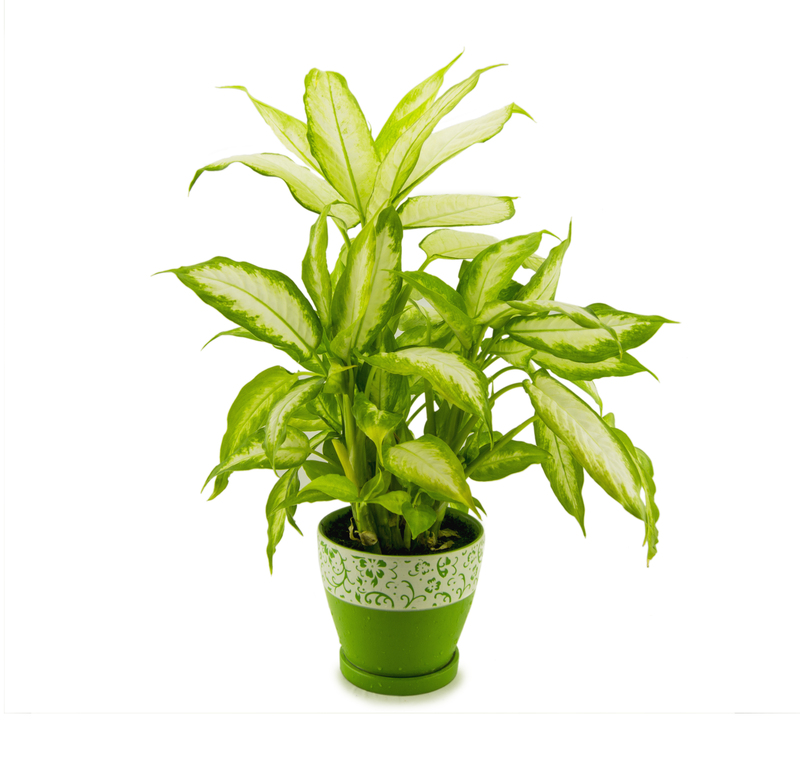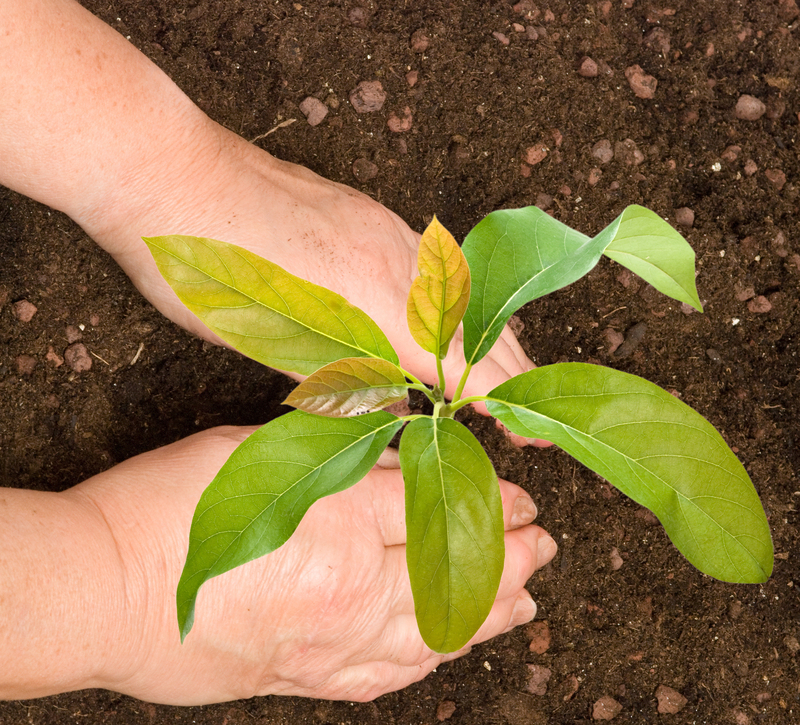Innovative Ideas for a Wholesome Child-Friendly Garden
Posted on 09/06/2025
Innovative Ideas for a Wholesome Child-Friendly Garden
Cultivating a garden is a wonderful way to connect children with nature, inspire their curiosity, and teach them valuable life skills. Today, creative ideas for wholesome, child-friendly gardens can transform any outdoor space into a magical sanctuary where kids play, learn, and grow. In this comprehensive guide, we'll explore innovative garden ideas for children that will foster fun, safety, learning, and sustainability.
Why Create a Child-Friendly Garden?
Children's gardens go beyond mere aesthetics. By designing productive, safe, and imaginative spaces for children, we plant the seeds for a lifelong love of nature, responsibility, and sustainability. Engaging kids in gardening:
- Encourages healthy outdoor play and physical activity
- Teaches life skills such as patience, responsibility, and cooperation
- Fosters curiosity and scientific learning in a hands-on environment
- Improves mental, physical, and emotional development
- Strengthens family bonds
By building a wholesome, child-friendly garden, you also create a sanctuary for wildlife and contribute to a healthier environment.

Principles of a Safe and Wholesome Child-Friendly Garden
- Safety First: Use non-toxic plants, avoid sharp tools and thorny bushes, and make sure there are no hazardous chemicals.
- Accessibility: Design raised beds, pathways, and garden areas that are easy for little hands and feet to explore.
- Engagement: Include interactive elements like sensory plants and hands-on activities for learning and fun.
- Diversity: Offer a variety of textures, scents, colors, and sounds to stimulate all senses.
- Education: Teach children about nature, pollinators, healthy eating, and sustainability through engaging garden elements.
Innovative Ideas for Your Wholesome Child-Friendly Garden
1. Create an Edible Wonderland
Let your kids discover the joy of homegrown food! Build a child-friendly edible garden packed with easy-to-grow fruits, vegetables, herbs, and flowers. Some fantastic options include:
- Strawberries
- Cherry tomatoes
- Baby carrots and radishes
- Peas and beans (great for teepees and tunnels!)
- Sunflowers (edible seeds and towering fun)
- Mint, basil, and parsley
- Edible flowers: nasturtiums, calendula, violets
Let your child select seeds, plant, water, and harvest. Encourage them to taste new flavors, decorate salads with edible flowers, or make minty lemonade. This hands-on approach teaches nutrition, patience, and responsibility.
2. Build Sensory Adventure Paths
A sensory garden stimulates sight, touch, taste, smell, and even hearing! Create winding paths with materials like:
- Soft moss
- Crunchy gravel
- Colorful stepping stones
- Aromatic herbs underfoot (thyme, chamomile)
- Chimes and water features
Add interactive zones where kids can stop and smell fragrant flowers, touch fuzzy lamb's ear leaves, or listen to wind chimes. Sensory play is vital for healthy development and emotional regulation.
3. Magical Fairy and Wildlife Corners
Spark imaginative play by dedicating a corner to a fairy or wildlife-friendly environment. Incorporate:
- Mini fairy houses or gnome figurines
- Butterfly feeders and bird baths
- Bug hotels or log piles for beetles and ladybugs
- Ponds or mini wetlands for frogs and dragonflies (ensure water safety!)
These enchanting spaces promote open-ended play, storytelling, and foster care for wildlife.
4. Grow a Living Teepee or Tunnel
Construct a living fort using fast-growing vines like runner beans, morning glories, or sweet peas. Create a frame with bamboo poles and let children plant seeds and watch as their green hideaway grows! These natural structures provide shade, privacy, and endless hours of imaginative fun.
5. Nature Craft Stations
Install a sheltered craft table where children can get messy with leaf rubbings, pressed flowers, mud pies, or painted stones. Encourage them to create bird feeders, wind chimes, or "nature art" using materials found in the garden. This ignites creativity and fine motor skills.
6. Water Play and Exploration Areas
No child-centered garden is complete without the magic of water! Integrate water play safely by including:
- Mud kitchens for sensory play
- Shallow basins to float leaves or race toy boats
- Rain chains and watering cans for gentle water play
- Mini ponds with shallow borders (always supervise!)
*Supervise young children at all times around water to ensure safety.*
7. Interactive Garden Markers and Learning Boards
Craft custom plant labels and colorful signs together. Install a chalkboard or weatherproof notepad for:
- Tracking plant growth
- Drawing and coloring
- Writing garden discoveries
- Recording bird or bug sightings
This merges fun with STEM learning and literacy!
8. Accessible Raised Beds and Child-sized Tools
Bring gardening down to your child's level with raised beds or planter boxes. Kids can design their own mini plots and tend to them easily. Supply them with lightweight, child-appropriate tools in bright colors to encourage independence and care for their special spaces.
9. Butterfly and Pollinator Gardens
Support local wildlife while teaching about the importance of pollinators. Grow an array of nectar-rich blooms like:
- Lavender
- Marigolds
- Cosmos
- Zinnias
- Echinacea
Add butterfly puddling stations (shallow dishes with sand and water), bee hotels, or mason bee homes. Children will love spotting new visitors!
10. Garden-Inspired Play Equipment
Enhance your kid-friendly garden design with playful features crafted from natural materials:
- Log stepping paths
- Balance beams
- Sandpits bordered with smooth stones
- DIY climbing frames surrounded by flowers
These elements encourage physical development and adventurous play.
Practical Tips for Designing a Wholesome Child-Friendly Garden
- Keep it chemical-free: Use organic matter and avoid pesticides, herbicides, and synthetic fertilizers.
- Choose resilient, non-toxic plants: Avoid plants with poisonous berries, thorns, or skin-irritating sap.
- Ensure shade and shelter: Plant trees or install shade sails to create cool play areas.
- Design clear boundaries: Use fences, hedges, or raised borders for safety and supervision.
- Encourage year-round play: Select a mix of perennials, evergreens, and seasonal interest for ongoing engagement.
- Add comfy seating: Benches or picnic rugs invite reading, snacks, and rest amidst the greenery.
Teaching Sustainability and Caring for Nature
Make your wholesome children's garden a classroom for environmental awareness:
- Create a compost bin with your kids to recycle kitchen and garden waste.
- Harvest rainwater in barrels to teach water conservation.
- Grow native plants to support local biodiversity.
- Host "garden rescue" missions to gently relocate worms, bugs, or seedlings.
- Host regular wildlife spotting sessions and keep a garden journal.
Engaging Kids in the Garden: Play, Learn, and Grow
A successful child-friendly garden is as much about the experience as it is about the design. To keep children engaged long term:
- Let them make decisions: Allow children to choose which seeds to plant or how to decorate their space.
- Celebrate milestones: Track the growth of their sunflowers or the first bite from their homegrown strawberry.
- Encourage teamwork: Invite friends, siblings, or grandparents for garden projects and group fun.
- Mix work with play: Combine educational activities with free, imaginative play in the garden.
Garden Themes for All Ages and Spaces
- Miniature gardens: Great for balconies or patios; use containers for a portable child's garden.
- Cultural themes: Explore foods and flowers from around the world.
- Storybook corners: Recreate scenes from children's books with themed plants and props.
- Night gardens: Choose night-blooming flowers and glow-in-the-dark paint for magical twilight play.
Making Your Child-Friendly Garden Stand Out
The key to a unique and inviting children's garden is to integrate your family's personality and interests. Involve children from the first sketch to the last flower planted. Add quirky art, hand-painted rocks, stepping-stone names, or a family mural.
Document your journey with photos and journals--a living memory book of your family's gardening adventures.

Frequently Asked Questions: Designing a Wholesome Child-Friendly Garden
-
What are the best plants for a child-friendly garden?
Opt for non-toxic, hardy plants like sunflowers, nasturtiums, strawberries, snapdragons, peas, and herbs. Avoid plants with poisonous berries or thorns. -
How do I make my garden safe for young children?
Supervise children, avoid pesticides, use round-edged materials, provide shade, and keep water features shallow and secure. -
How can I encourage my child to spend more time in the garden?
Design interactive zones, let kids make choices, and schedule regular garden days with fun, hands-on tasks.
Conclusion: Sow the Seeds for a Wholesome, Child-Friendly Garden
A child-friendly garden offers more than a place to play; it's a space for discovery, growth, and connection. By embracing creativity, safety, and sustainability, families can cultivate a garden that inspires, educates, and delights children of all ages. Whether your garden is a sprawling backyard or a compact balcony, these innovative child-friendly garden ideas will help you plant the seeds for a happier, healthier, and more harmonious future.
Start today - and watch your child, and your garden, bloom together!

